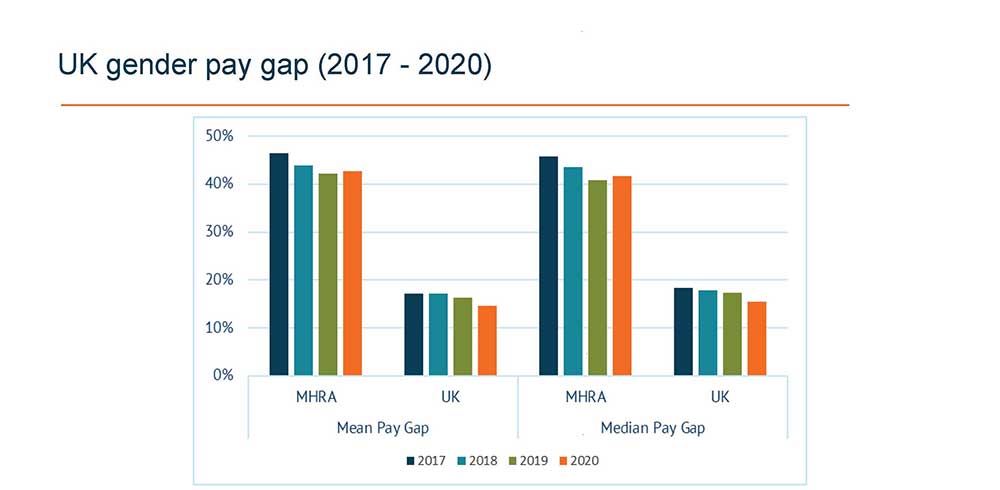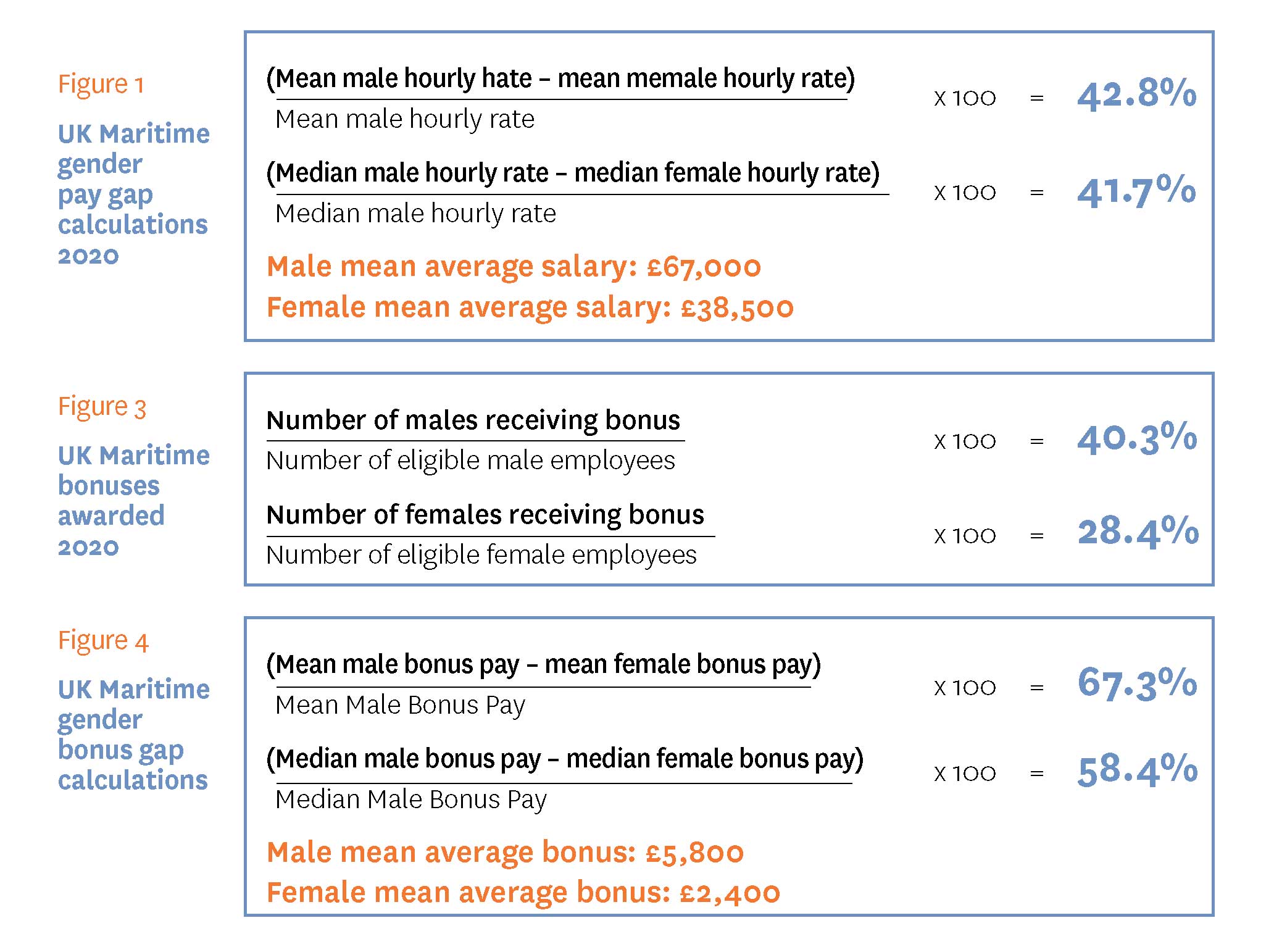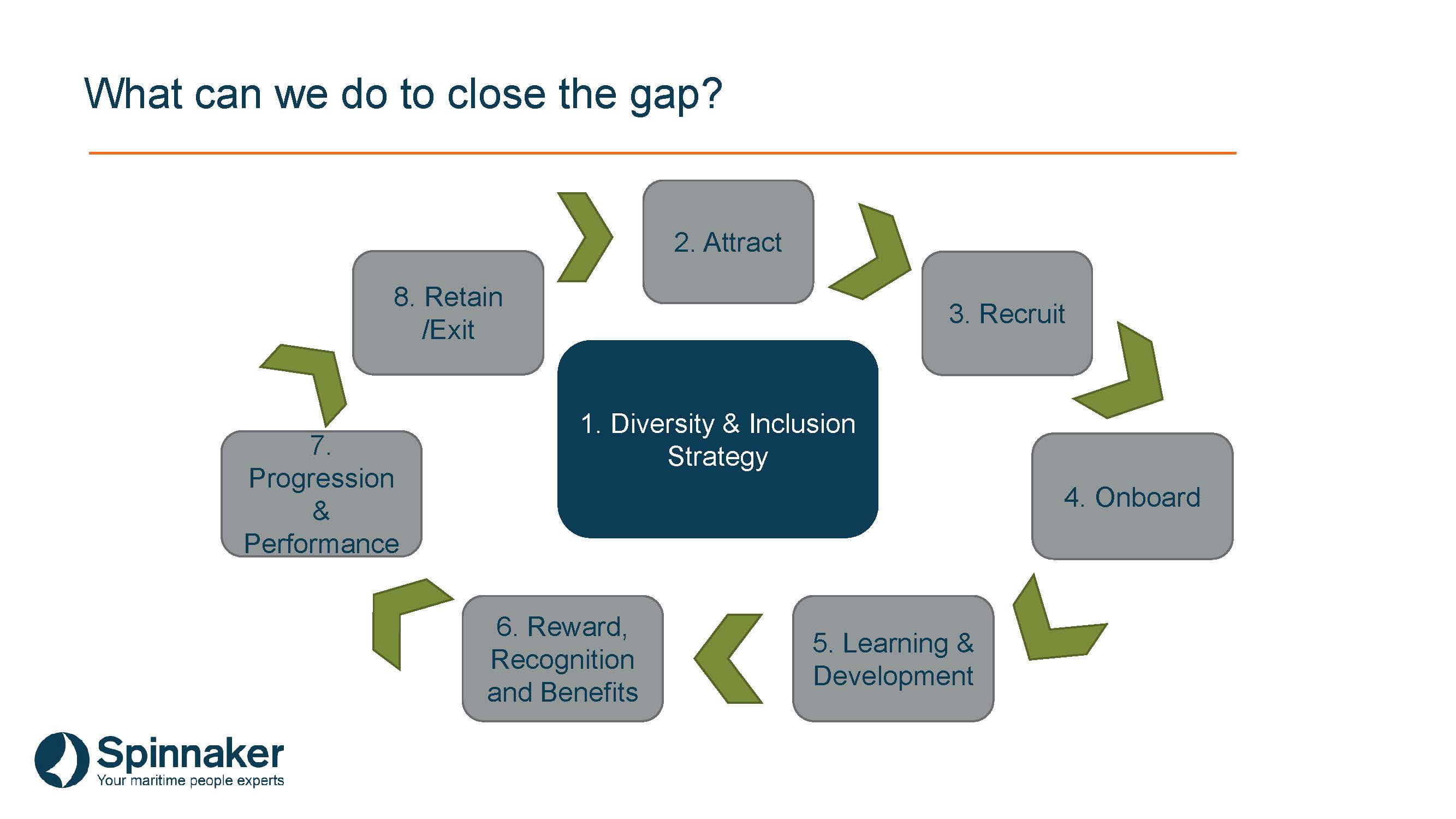- Topics
- Campaigning
- Careers
- Colleges
- Community
- Education and training
- Environment
- Equality
- Federation
- General secretary message
- Government
- Health and safety
- History
- Industrial
- International
- Law
- Members at work
- Nautilus news
- Nautilus partnerships
- Netherlands
- Open days
- Opinion
- Organising
- Podcasts from Nautilus
- Sponsored content
- Switzerland
- Technology
- Ukraine
- United Kingdom
- Welfare

Gender pay gap reporting is used as a way to assess how women are faring on average at work compared to their male colleagues. And since mandatory reporting was introduced in Britain four years ago, an analysis has been carried out each year across all shore-based jobs in UK maritime. Sarah Robinson takes a look at the latest figures
The Maritime HR Association has released the findings of its UK gender pay gap analysis for 2020, revealing that progress on equality in the workplace is still slow.
The analysis covers average hourly wages and bonus payments for men and women employed in shore-based maritime jobs. Anonymised salary data for all UK employees is submitted annually by employers who are members of the Maritime HR Association and analysed by the HR and recruitment agency Spinnaker.
In an online presentation in November 2020, Sarah Hutley of Spinnaker said it was worth remembering that gender pay gap reporting is not the same thing as 'equal pay for equal work'. Male and female individuals doing the same or equivalent work must be paid the same wages under UK law, and this has been the case for nearly 50 years.
Instead, the gender pay gap is a measure of how well women on average are faring in a company compared to men. A large average pay gap can be an indication that there are few women in senior roles, for example, or that part time roles dominated by female employees are not offering an hourly rate commensurate with the post-holder's experience.
In the UK, gender pay gap analysis and reporting has been a legal requirement since 2016 for companies with over 250 employees. If a large pay gap is identified, a company must state which measures it intends to implement to narrow the gap.
Maritime gender pay gap 2020

The headline figures in the Spinnaker analysis of UK shore-based maritime jobs are that there is a gender pay gap of 42.8% when the average hourly rate is calculated according to the mean, and 41.7% according to the median (fig.1).
This is considered a large pay gap, and compares unfavourably with the mean and median figures for the UK as a whole, which are both close to 15% (fig. 2).
Another concern is that the figures show that the maritime gender pay gap has increased slightly since 2019 (fig. 2), reversing a previous downward trend.
However, Ms Hutley said the difference may have been influenced somewhat by changes in the membership of the Maritime HR Association – perhaps indicating that some companies with a high gender pay gap had joined the Association in the last year.
Maritime bonus gender pay gap 2020
Under UK gender pay gap reporting law, employers must also report their gender pay gap for bonuses. Looking at all shore-based maritime jobs where employees are eligible for a bonus, Spinnaker found that 40.3% of males received a bonus, compared with 28.4% of females (fig. 3).

When the average size of those bonuses was compared, a pay gap was found of 67.4% on the mean calculation and 58.3% on the median (fig. 4).
Pay quartiles and seniority
A further requirement of gender pay gap reporting is that companies must show how each pay quartile is divided between men and women, and the Spinnaker analysis shows the proportion of women falling steadily with each quartile. In the lowest quartile, around 75% of shore-based maritime employees are women, but the highest quartile is reached, the proportion is closer to 25%.
An analysis of the proportion of men and women at each level of seniority also shows a steady decrease in the proportion of women as the seniority increases.
Spinnaker has carried out an additional analysis looking at the various shore-based specialisms within UK maritime. This shows that the job types that are female-dominated tend to offer a lower salary than those that are male-dominated – even where the skills and experience needed for the jobs are comparable.
A large average pay gap can be an indication that there are few women in senior roles, for example, or that part time roles dominated by female employees are not offering an hourly rate commensurate with the post-holder's experience Sarah Hutley, Spinnaker
Closing the gap
So what conclusions can we draw from this, and how can employers take action to effect change – as they must do under gender reporting legislation?
Sarah Hutley is keen to stress that this is a marathon, not a sprint. Many senior maritime roles ashore require senior experience at sea; and with seafaring being so heavily male-dominated that many vessels have no women onboard, there is only a small pool of female seafarers to draw on. As efforts continue to encourage more girls to take up a career at sea, this should eventually have a knock-on effect onshore, and there are numerous initiatives working towards that goal, from the Careers at Sea Ambassadors volunteer programme run by the Merchant Navy Training Board to the state-supported Maritime Roadshow for Girls.

Meanwhile, she notes, the principles for achieving greater diversity and inclusion within a company are already well established. This starts with having a strategy for change (which is taken seriously and implemented) and continues through measures such as 'onboarding' – meaning that employees are welcomed for who they are and the diverse skills they bring rather than being expected to confirm to an existing norm.
Maritime employers can receive support to even up the gender balance in their companies by signing the industry-wide Women in Maritime Charter. Nautilus was one of the first organisations to pledge, and there are many other major maritime employers involved, including the Royal Fleet Auxiliary, IHS Markit and Fleetwood Nautical Campus (Blackpool & the Fylde College).
The pay gap and the pandemic
The next round of gender pay gap reporting will be suspended due to the recent distortion of salary figures created by the Covid-19 pandemic, in which many UK workers took a temporary pay cut under government-backed 'furlough' schemes in the hope that this would prevent mass redundancies.
Unfortunately, redundancies and permanent salary cuts are now starting to take effect, and there are indications these are disproportionately affecting women. However, there may also be unexpected benefits of the pandemic for female workers, as there has been a step change in employers' willingness to adopt remote and flexible working. 'These changes to working practices could open doors for women,' says Ms Hutley, 'as there is far less onus on visibility and more emphasis on results.'
Tags
